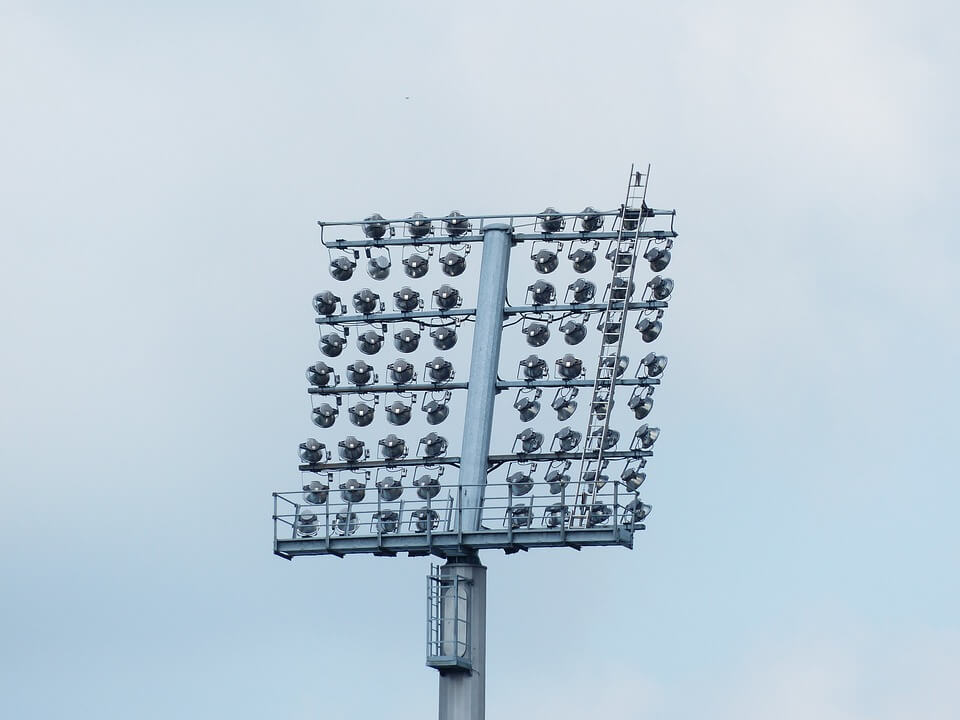
LED Flood Lights
LED Floodlights are floodlighting fixtures that provide equal illumination across a large area such as a yard, square, stadium, stage or other venues with ample space. LED Floodlights are becoming more popular. At one point, metal halide and high-pressure sodium were two of the most prevalent lighting sources for floodlights.
Light-Emitting Diodes have only recently become commonplace in this sector due to the lightning-fast advancements in LED production and packaging. Compared to traditional illumination forms, LED lighting offers unrivaled benefits that satisfy the requirements for reduced energy consumption and maintenance levels.
This article will provide an in-depth discussion of the benefits of using LED floodlights and a brief overview of a few of the drawbacks you should consider.
Benefits of LED floodlights
Compatibility
Regardless of whether the lights are lamps or integrated fixtures, LED lights flood lights are compatible with the flood lamps, and solutions are often used. It indicates that you can go out and get LED flood lighting and set them up in a matter of minutes. Alternatively, if you want to utilize an LED flood light fixture, all you need to do is take the old one out of the way and put the new one in its place in a straightforward manner.
Minimal heat emission
LEDs do not emit infrared radiation since their lighting system prevents it. IR radiation quickly raises the temperature of the surrounding environment. It will result in lower costs for the cost of air conditioning. Due to the excellent efficiency of LEDs, there is no potentially dangerous ultraviolet radiation, and the temperature of the body of the fixture remains within permissible parameters.
High efficiency
LED is a more effective source of illumination than more traditional lighting options, such as high sodium or metal halide. The lumens-per-watt record is broken regularly in laboratories all around the globe. In addition, LEDs that are manufactured in large quantities may achieve a lumen output of around 90–100 per watt. The value has already surpassed HPS (High-Pressure Sodium), earlier the most efficient light source and metal halide.
Durability
The most incredible benefit of LED lighting is its very long life cycle. The average lifespan of an LED is around 50,000 hours, which is the amount of time it takes for the lumen output to drop by half from its original value. Compared to more conventional light sources, the lifetime is 10 to 50 times longer. In addition, LED flood lights use chips constructed with tens of individual LEDs or integrated high-power emitters. If one or more of the lighting units go out, it will not have any effect on the functionality at all. Therefore, it is more durable than other bulbs that are often used.
Offers different colors
LEDs have a distinctive quality that enables them to produce a wide range of colors with relative ease and without the need for color filters. Because there is no waste from filtration, this results in additional energy savings. In addition, the size of LED floodlights may be smaller, and they do not need other optical installations.
Disadvantages of LED flood lights
LED flood lights are costly
The initial investment is much more than that of conventional bulbs. The cost of LED lights is three to five times more than that of traditional bulbs. However, there may be a significant reduction in operational expenses such as electricity bills, the cost of often replacing lamps, and the number of human resources required for maintenance.
LED flood lights can fail to be powerful enough
LED floodlights do not have sufficient power for some crucial applications that need an exceptionally high lumen output. Due to the limitations imposed by heat sinking, it is difficult for LED flood light fixtures to provide more than 200 Watts light. Therefore, it is challenging to achieve 10,000 lumens using LED flood lights. In this regard, high-pressure sodium (HPS) or metal halide may quickly achieve the aim since there is not a great deal of worry over heat dissipation for them.
In a nutshell, LED floodlights may successfully replace traditional bulbs in many applications requiring floodlights. The new LED technology is an environmentally friendly alternative requiring less upkeep and electricity than previous lighting technologies. The high initial cost and limited total lumen production are the primary factors preventing the technology’s widespread adoption.






